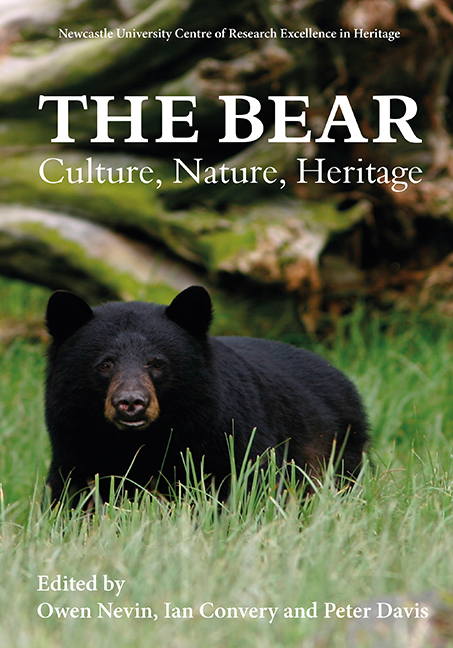Book contents
- Frontmatter
- Contents
- List of Illustrations
- Acknowledgments
- List of Abbreviations
- Foreword: The Bear: A Cultural and Natural Heritage
- Introduction: What is a Bear?
- Bear-People Interactions
- Bears in the Public Gaze
- Bear Biology, Management and Conservation
- Afterword: “It's Me Bear”: Reflections on a Unique Career Working with Bears
- List of Contributors
- Index
- Previous titles
13 - Chemical Signalling in Brown Bears
Published online by Cambridge University Press: 21 March 2020
- Frontmatter
- Contents
- List of Illustrations
- Acknowledgments
- List of Abbreviations
- Foreword: The Bear: A Cultural and Natural Heritage
- Introduction: What is a Bear?
- Bear-People Interactions
- Bears in the Public Gaze
- Bear Biology, Management and Conservation
- Afterword: “It's Me Bear”: Reflections on a Unique Career Working with Bears
- List of Contributors
- Index
- Previous titles
Summary
Olfactory communication has been defined as: ‘The process whereby a chemical signal is generated by a presumptive sender and transmitted (generally through the air) to a presumptive receiver who by means of adequate receptors can identify, integrate and respond (either behaviourally or physiologically) to the signal’ (Eisenberg and Kleiman 1972, 1).
Brown bears (Ursus arctos) have been reported in literature to mark and rub on trees (Tschanz et al 1970; Green and Mattson 2003; Puchkovskiy 2009). This has been linked to olfactory communication among brown bears, though until recently no clear function had been attributed. In this chapter we present an overview of research conducted to explore the biological significance of chemical signalling in brown bears (from Clapham 2012; Clapham et al 2012, 2013, 2014). This was conducted by assessing scent marking site selection, understanding who are the signallers and receivers, and studying the postures and stereotypithy of marking behaviour. To establish why these behaviours have evolved, the significance of observed signalling behaviours can be evaluated in terms of their potential fitness benefits. Assessing the function of scent marking in brown bears provides an opportunity to establish its influence on the social behaviour of the species, thus demonstrating the importance of behavioural studies conducted in situ. Collectively, knowledge of this form of social behaviour provides a unique insight into the social complexity of this species.
BEARS AND TREE MARKING
Brown bears claw, bite, urinate and rub various parts of the body against trees, each being suggested as a method of chemical communication (Tschanz et al 1970; Lloyd 1979; Green and Mattson 2003; Puchkovskiy 2009). Brown bears are reported to use a diverse range of tree species for their marking activities; these are often referred to as ‘bear trees’ or ‘rub trees’ (Tschanz et al 1970; Puchkovskiy 2009). The use of ‘traditionally rubbed trees’ by brown bears is highlighted by Green and Mattson (2003). These are trees that are repeatedly used for marking by bears over successive years, and their non-random selection is said to indicate their importance within intraspecific communication (Tschanz et al 1970; Green and Mattson 2003; Clapham 2012; Clapham et al 2013), rather than an individual response to external stimuli as suggested by Meyer-Holzapfel (1968, in Burst and Pelton 1983).
- Type
- Chapter
- Information
- The Bear: Culture, Nature, Heritage , pp. 163 - 176Publisher: Boydell & BrewerPrint publication year: 2019



